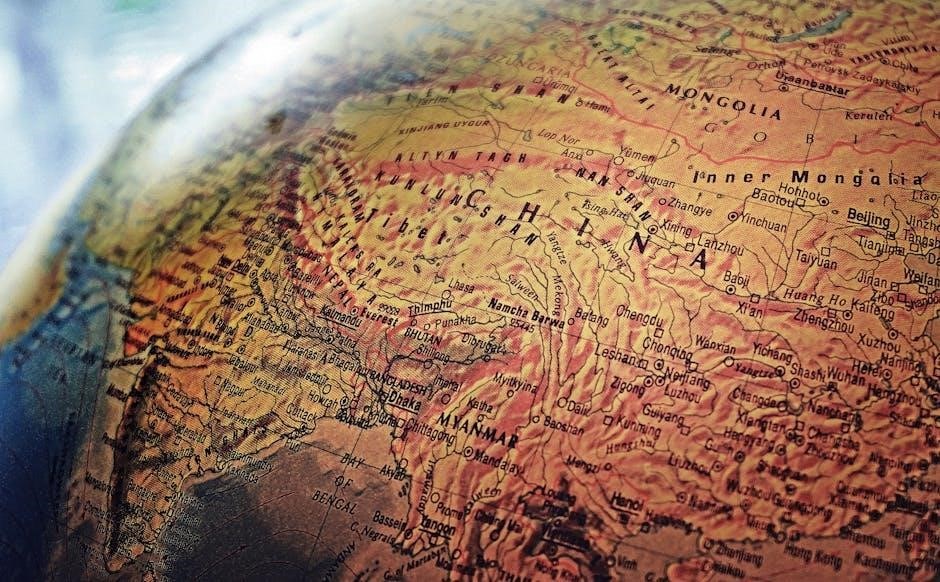ap world history unit 1 study guide
This unit explores the global tapestry of civilizations from 1200 to 1450, focusing on state-building, cultural developments, and interactions across East Asia, the Islamic World, Africa, the Americas, and Europe.
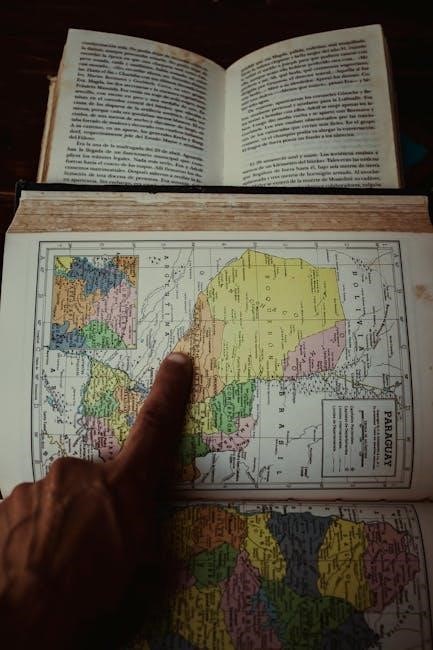
The Global Tapestry
Between 1200 and 1450, the world witnessed a complex interplay of civilizations, each contributing to a global tapestry of cultural, economic, and political exchange. East Asia, under the Mongols and Yuan Dynasty, saw advancements in administration and trade. The Islamic World flourished during its Golden Age, spreading knowledge and innovation across Africa, Europe, and Asia. Africa’s Mali and Songhai Empires thrived, while the Swahili Coast became a hub of maritime trade. The Americas were home to powerful empires like the Aztecs and Incas. Europe, emerging from the medieval period, began to reconnect with global networks. This era laid the foundation for a interconnected world, shaping the course of history through trade, cultural exchange, and technological advancements.

Developments in East Asia
East Asia saw significant advancements under the Mongol Empire and Yuan Dynasty, with administrative reforms and cultural exchanges flourishing. Japan experienced feudal restructuring during the Kamakura and Muromachi periods.
3.1 The Mongol Empire
The Mongol Empire, founded by Genghis Khan in the early 13th century, became the largest contiguous empire in history; Its expansion relied on military prowess, efficient administration, and tolerance of diverse cultures. The Mongols established the Yuan Dynasty in China, promoting trade and cultural exchange along the Silk Road. Their military strategies, including the use of cavalry and intelligence networks, ensured dominance. The empire’s decline began in the 14th century due to internal conflicts and external pressures, but its legacy in governance, trade, and cultural diffusion endured, shaping global interactions for centuries.
3.2 The Yuan Dynasty in China
The Yuan Dynasty, established by Kublai Khan in 1271, marked the Mongol rule in China. It promoted trade and cultural exchange, fostering connections along the Silk Road. The capital, Khanbaliq (modern Beijing), became a center of diverse cultures. The Yuan administration relied on existing Chinese systems but faced challenges, including ethnic tensions between Mongols and Chinese. Economic prosperity declined due to over-reliance on tributes and the impact of the Black Death. The dynasty’s end in 1368 led to the Ming Dynasty, but its legacy in promoting global interactions and cultural blending remained significant in world history.
3.3 Kamakura and Muromachi Japan
The Kamakura period (1185–1333) saw the rise of the warrior class and the establishment of the shogunate, with the Minamoto clan dominating politics. The Mongol invasions in the late 13th century were repelled, strengthening the shogunate’s authority. Buddhism, particularly Zen, flourished, influencing samurai culture. The Muromachi period (1336–1573) began with the Ashikaga shogunate, marked by regional instability and the Ōnin War. The samurai code of conduct, bushido, became central to warrior identity. Social hierarchy remained rigid, with the emperor holding symbolic power. This era laid the groundwork for Japan’s unification and cultural evolution, blending tradition with emerging influences.
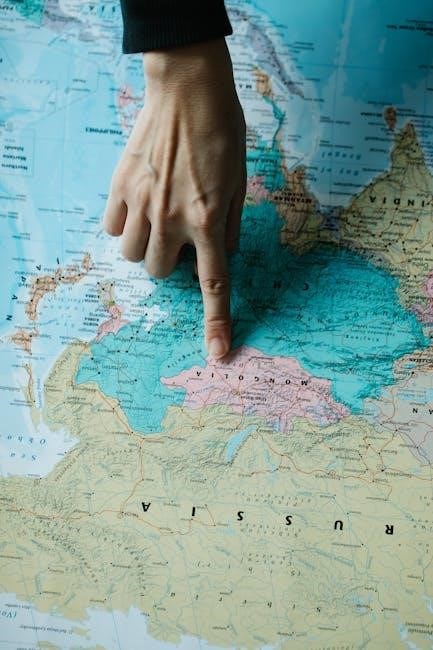
The Islamic World
The Islamic Golden Age saw advancements in science, mathematics, and culture, while expansion into Africa and Europe spread Islamic influence, shaping diverse societies and trade networks.
4.1 The Islamic Golden Age
The Islamic Golden Age (8th–14th centuries) was a period of remarkable cultural, scientific, and intellectual growth. Scholars preserved and expanded upon ancient Greek, Persian, and Roman knowledge, advancing mathematics, astronomy, and medicine. Al-Khwarizmi pioneered algebra, while Ibn Sina’s works in medicine remained influential for centuries. Islamic innovations in architecture, art, and engineering flourished, with landmarks like the Alhambra and mosques showcasing intricate designs. Trade and cultural exchange spread Islamic ideas globally, fostering a diverse and interconnected world. This era laid the foundation for later scientific revolutions and highlighted the Islamic world’s central role in global intellectual developments during this period.
4.2 Expansion into Africa and Europe
Islamic expansion into Africa and Europe during the 8th–14th centuries reshaped global dynamics. In Africa, Islam spread through trade networks across the Sahara Desert, influencing regions like the Swahili Coast and the Mali Empire. In Europe, Islamic rule in the Iberian Peninsula (al-Andalus) introduced advanced knowledge and cultural practices. Muslim traders and scholars facilitated the exchange of goods, ideas, and technologies, bridging Africa, Europe, and Asia. This period saw the integration of Islamic traditions into diverse societies, fostering cultural and economic ties that endured for centuries, even as political boundaries shifted. The legacy of this expansion remains evident in the shared heritage of these regions.

Developments in Africa
Africa saw the rise of powerful empires like Mali and Songhai, which flourished through trade and cultural exchange. The Swahili Coast became a hub for maritime trade, connecting East Africa to global networks and fostering economic prosperity.

5.1 The Mali and Songhai Empires
The Mali Empire rose to prominence in West Africa, with Sundiata Keita establishing its foundation. Mansa Musa’s reign showcased wealth and influence, notably through his pilgrimage to Mecca. The empire’s power waned, leading to the rise of the Songhai Empire. Under Sunni Ali and Askia Muhammad, Songhai expanded its territories and strengthened its military. Both empires relied on the gold and salt trade, fostering economic prosperity. Timbuktu became a center of learning and culture. However, internal conflicts and external pressures eventually led to their decline, reshaping West Africa’s political landscape during this period.
5.2 The Swahili Coast
The Swahili Coast, a network of city-states along East Africa, thrived as a hub of maritime trade and cultural exchange. Cities like Kilwa, Mombasa, and Zanzibar became centers of commerce, trading goods such as ivory, spices, and textiles. The region’s prosperity was fueled by its strategic location along Indian Ocean trade routes. Swahili, a Bantu-Arabic language, emerged as a lingua franca, reflecting the cultural blending of African, Arab, and Asian influences. The Swahili Coast also saw the rise of Islamic architecture and a vibrant intellectual life, making it a key player in the global tapestry of the 13th to 15th centuries.
The Americas
The Americas were home to diverse civilizations, including the Aztecs and Incas, who developed advanced agricultural systems, trade networks, and cultural practices during this period.
6.1 The Aztec and Inca Empires
The Aztec and Inca Empires were prominent civilizations in the Americas during 1200–1450. The Aztecs, centered in Tenochtitlán, built a powerful empire through military conquest and religious influence. Their sophisticated calendar and agricultural systems sustained a dense population. The Incas, meanwhile, established a vast empire in the Andean region, known for its advanced road network and administrative efficiency using quipus. Both empires relied on centralized political structures and religious ideologies to maintain control. Their achievements in architecture, such as Machu Picchu, and agricultural terracing showcased their technological prowess. However, both empires faced challenges, including internal strife and external pressures, which ultimately led to their decline.
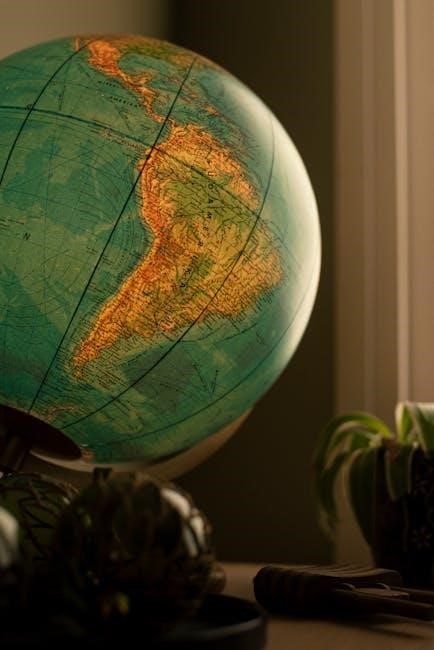
Europe
Europe during 1200–1450 saw the rise of centralized states, feudalism, and the Catholic Church’s influence. Cultural developments and intellectual growth emerged, while the Black Death reshaped society.
7.1 The Late Medieval Period
The Late Medieval Period in Europe (1200–1450) was marked by the rise of centralized states, feudalism, and the Catholic Church’s dominance. The Black Death devastated populations, leading to social and economic shifts. Cultural developments included the emergence of humanism, while conflicts like the Hundred Years’ War shaped regional power dynamics. The Church faced challenges, including the Avignon Papacy and the Great Schism, weakening its authority. Trade and technological advancements, such as the heavy plow, contributed to economic recovery. This period laid the groundwork for the Renaissance and the rise of nation-states, transforming Europe’s political, cultural, and religious landscapes.
Trade Networks
- The Silk Road connected East Asia with the Mediterranean, facilitating trade of silk, spices, and porcelain.
- The Spice Trade linked the Indian Ocean, exchanging spices, textiles, and precious stones across regions.
8.1 The Silk Road
The Silk Road was a vital trade network connecting East Asia with the Mediterranean, facilitating the exchange of goods like silk, spices, and porcelain. It spanned over 4,000 miles, linking China with Central Asia, the Middle East, and Europe. Merchants traded luxury items such as Chinese silk, Indian spices, and Roman glass. The route also enabled the spread of ideas, religions, and technologies. Key stops included Chang’an (modern Xi’an), Samarkand, and Constantinople. The Silk Road fostered cultural exchange and economic prosperity, bridging distant civilizations and shaping global commerce during this period.
8.2 The Spice Trade
The Spice Trade was a lucrative network connecting Asia, Africa, and Europe, primarily involving spices like pepper, cinnamon, and cloves. These commodities were highly valued for flavoring food and preserving meat. The trade flourished due to demand in Europe, where spices were also used in medicine and rituals. Key players included Arab merchants, Indian kingdoms, and later European explorers. The Spice Trade shaped global commerce, fostering economic ties and cultural exchange. It also spurred European exploration, as nations sought direct access to spice sources, leading to discoveries like the sea route to India and the Americas.

The Black Death
The Black Death, a pandemic caused by the bubonic plague, devastated Europe and parts of Asia in the 14th century. It led to significant demographic shifts, with millions dying, disrupting societies and economies. The plague weakened feudal systems, leading to labor shortages and the rise of a wage-based economy. Social and cultural changes followed, including increased persecution of minorities blamed for the outbreak. The Black Death also influenced art, literature, and religious practices, fostering a sense of mortality and existential reflection. Its impact reshaped medieval Europe, leaving lasting effects on population dynamics, social structures, and cultural development.

Cultural and Intellectual Developments
During this period, advancements in science, art, and literature flourished, particularly in the Islamic Golden Age. Architectural innovations and religious influences shaped cultural identities globally.
10.1 Art and Architecture
The Islamic Golden Age saw architectural marvels like the Alhambra and the Dome of the Rock, blending geometric patterns and calligraphy. In East Asia, temples and palaces featured intricate wood carvings and tiled roofs. Gothic cathedrals in Europe emphasized verticality with flying buttresses. Art often reflected religious themes, with Islamic ceramics and illuminated manuscripts showcasing cultural sophistication. These developments highlighted the fusion of aesthetics and engineering, creating enduring legacies that defined their respective civilizations.
10.2 Literature and Science
The Islamic Golden Age flourished with scholars like Ibn Sina and Ibn Rushd, whose works in medicine and philosophy were translated into Latin, influencing European thought. East Asian literature, such as “The Tale of the Heike,” reflected Buddhist themes and societal values. Scientific advancements included astronomical observations and mathematical innovations, particularly in the Islamic World. These developments underscored the exchange of knowledge across civilizations, laying the groundwork for future intellectual and scientific progress.
10.3 Spread of Religions
Religions like Islam, Buddhism, and Christianity spread widely during this period. Islam expanded into Africa and Europe through trade and conquest, while Buddhism flourished in East Asia, influenced by Indian and Mongol interactions. Christianity maintained its presence in Europe, with the Catholic Church playing a central role. Missionaries and traders facilitated the exchange of religious ideas, shaping cultural identities. The preservation of religious texts and the adaptation of practices to local cultures further solidified these faiths’ influence, creating a diverse yet interconnected spiritual landscape across the globe.
The Decline of the Mongol Empire
The Mongol Empire’s decline began in the mid-14th century due to internal fragmentation and external pressures. Succession crises weakened centralized control, leading to the empire’s division into khanates. The Black Death devastated populations, disrupting trade and stability. Regional powers, such as the Ming Dynasty in China and the Grand Duchy of Moscow, asserted independence. By 1368, the Yuan Dynasty in China collapsed, and the Golden Horde’s influence waned in Russia. The empire’s vast territories gradually fragmented, marking the end of Mongol dominance. Despite its decline, the Mongol legacy endured in political structures, cultural exchanges, and the spread of ideas across Eurasia.
The Rise of New Empires
The 14th to 15th centuries saw the emergence of new empires following the decline of Mongol dominance. The Ming Dynasty in China restored native rule, reviving Confucian traditions and advancing maritime trade. In the Islamic World, the Ottomans expanded into Eastern Europe, while the Timurid Empire, founded by Timur, flourished in Central Asia. These empires built upon Mongol administrative systems but introduced distinct cultural and religious identities. The rise of these powers reshaped global politics, trade, and culture, setting the stage for early modern state systems and cross-regional interactions that would define the next era of world history.
Key Themes and Concepts
Unit 1 emphasizes state-building, cultural exchange, and the impact of trade networks. Key themes include the rise and fall of empires, religious influences, and technological advancements. The Mongol Empire’s legacy, maritime trade, and the Black Death’s demographic effects are central. Cultural blending, such as syncretic religions and art, highlights interconnectedness. Social hierarchies, gender roles, and environmental factors also shape societies. These concepts provide a framework for understanding the complexities of global interactions during this period, fostering analytical skills for comparing and contrasting civilizations. Mastery of these themes is essential for success in AP World History, as they recur throughout the course.
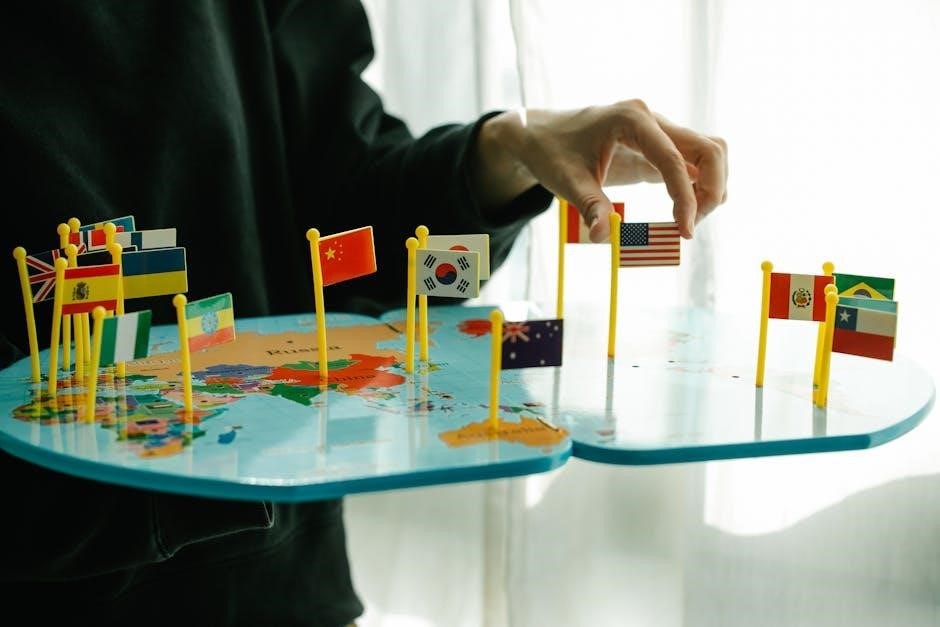
Study Tips and Strategies
To excel in Unit 1, focus on understanding key themes like state-building, cultural exchange, and trade networks. Use practice questions to apply knowledge, and create a timeline of major events. Flashcards can help memorize empires, religions, and technologies. Join study groups to discuss complex topics and review with guides like Heimler’s. Regularly review notes and prioritize higher-order thinking skills, such as comparing civilizations. Utilize online resources like Quizlet for interactive learning. Break study sessions into manageable chunks, and practice essay prompts to refine writing skills. Stay organized and track progress to ensure mastery of the material.
Practice Questions and Review
Engage with practice questions to reinforce understanding of Unit 1 concepts, such as state-building and cultural exchange. Focus on multiple-choice questions and essay prompts to improve critical thinking and writing skills. Review study guides like Heimler’s AP World History guide for targeted practice. Use flashcards to memorize key terms and empires. Quizlet offers interactive tools for self-assessment. Regularly test yourself on timelines and thematic connections. Practice analyzing primary sources and maps to strengthen historical thinking. Reviewing past exams and sample questions can help identify areas for improvement. Consistent practice ensures mastery of the material and prepares you for the AP exam format.
Technological Innovations
During the period of 1200 to 1450, technological advancements played a crucial role in shaping civilizations. The Mongols utilized composite bows and horse breeding to dominate vast territories. In East Asia, the Yuan Dynasty embraced gunpowder, the compass, and printing, revolutionizing warfare, navigation, and knowledge dissemination. These innovations facilitated trade and cultural exchange across the Silk Road and beyond. Such advancements not only enhanced military prowess but also spurred intellectual and economic growth, laying the foundation for future global interconnectedness. Understanding these technologies is key to grasping the dynamics of this transformative era in world history.
The Role of Women in Various Societies
The role of women in societies from 1200 to 1450 varied significantly across regions. In East Asia, Confucian ideals emphasized women’s domestic roles, while in the Islamic World, women could influence culture and religion. In Africa, women often held political and spiritual power, particularly in kingdoms like Mali and Songhai. In Europe, women’s roles were largely confined to the household, though some gained influence through religious orders. Across the Americas, women contributed to agriculture and cultural practices. Despite these diverse roles, societal norms often restricted women’s opportunities, highlighting the complex interplay of gender, culture, and power during this period.
Environmental and Demographic Changes
Between 1200 and 1450, environmental and demographic changes shaped societies globally. The Mongol Empire’s expansion led to deforestation and land degradation due to military campaigns and administrative demands. The Black Death devastated Europe’s population, causing labor shortages and societal shifts. In East Asia, agricultural advancements supported population growth, while in Africa, environmental factors like soil depletion impacted farming communities. Climate fluctuations and the spread of diseases through trade networks further influenced demographic patterns. These changes reshaped labor systems, economic structures, and cultural practices, highlighting the interconnectedness of human and environmental systems during this transformative period.
